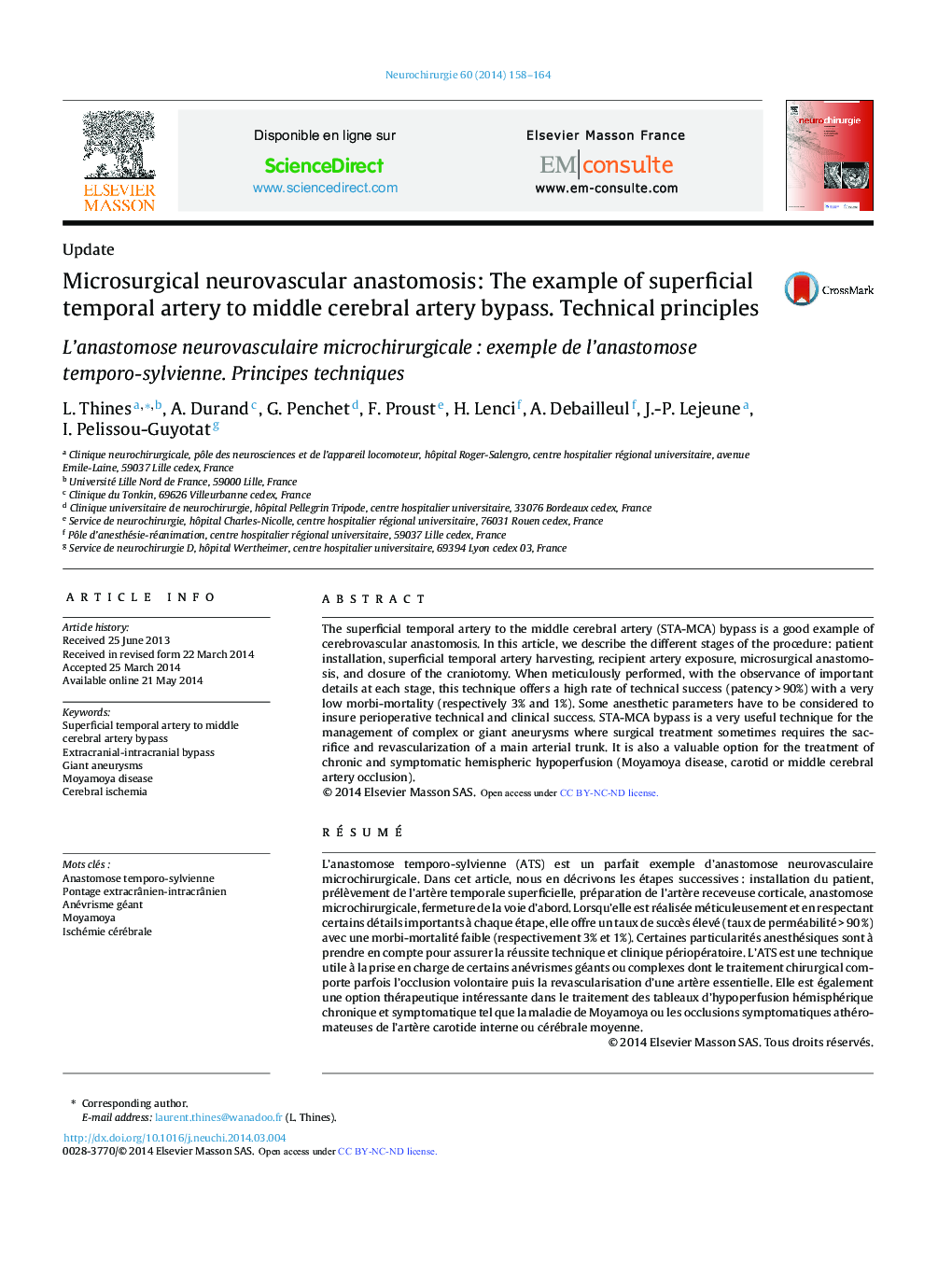| کد مقاله | کد نشریه | سال انتشار | مقاله انگلیسی | نسخه تمام متن |
|---|---|---|---|---|
| 6152083 | 1245791 | 2014 | 7 صفحه PDF | دانلود رایگان |
The superficial temporal artery to the middle cerebral artery (STA-MCA) bypass is a good example of cerebrovascular anastomosis. In this article, we describe the different stages of the procedure: patient installation, superficial temporal artery harvesting, recipient artery exposure, microsurgical anastomosis, and closure of the craniotomy. When meticulously performed, with the observance of important details at each stage, this technique offers a high rate of technical success (patency > 90%) with a very low morbi-mortality (respectively 3% and 1%). Some anesthetic parameters have to be considered to insure perioperative technical and clinical success. STA-MCA bypass is a very useful technique for the management of complex or giant aneurysms where surgical treatment sometimes requires the sacrifice and revascularization of a main arterial trunk. It is also a valuable option for the treatment of chronic and symptomatic hemispheric hypoperfusion (Moyamoya disease, carotid or middle cerebral artery occlusion).
RésuméL'anastomose temporo-sylvienne (ATS) est un parfait exemple d'anastomose neurovasculaire microchirurgicale. Dans cet article, nous en décrivons les étapes successives : installation du patient, prélèvement de l'artère temporale superficielle, préparation de l'artère receveuse corticale, anastomose microchirurgicale, fermeture de la voie d'abord. Lorsqu'elle est réalisée méticuleusement et en respectant certains détails importants à chaque étape, elle offre un taux de succès élevé (taux de perméabilité > 90 %) avec une morbi-mortalité faible (respectivement 3% et 1%). Certaines particularités anesthésiques sont à prendre en compte pour assurer la réussite technique et clinique périopératoire. L'ATS est une technique utile à la prise en charge de certains anévrismes géants ou complexes dont le traitement chirurgical comporte parfois l'occlusion volontaire puis la revascularisation d'une artère essentielle. Elle est également une option thérapeutique intéressante dans le traitement des tableaux d'hypoperfusion hémisphérique chronique et symptomatique tel que la maladie de Moyamoya ou les occlusions symptomatiques athéromateuses de l'artère carotide interne ou cérébrale moyenne.
Journal: Neurochirurgie - Volume 60, Issue 4, August 2014, Pages 158-164
